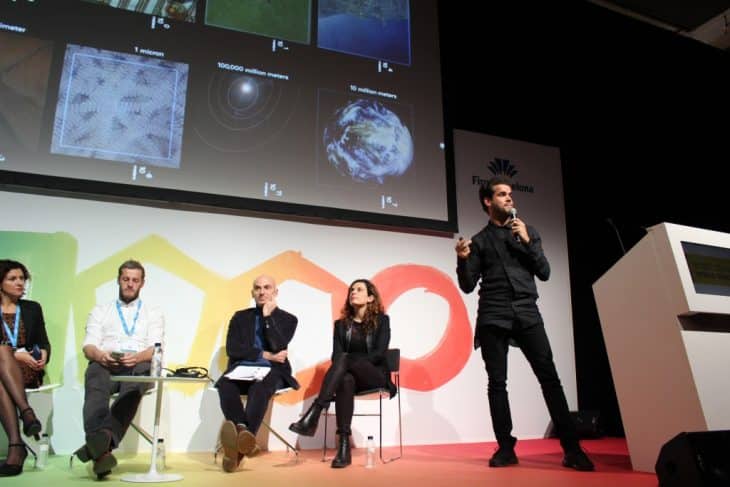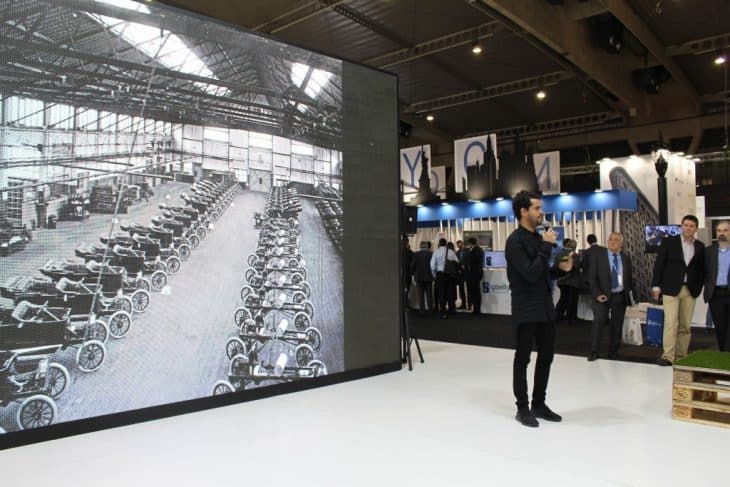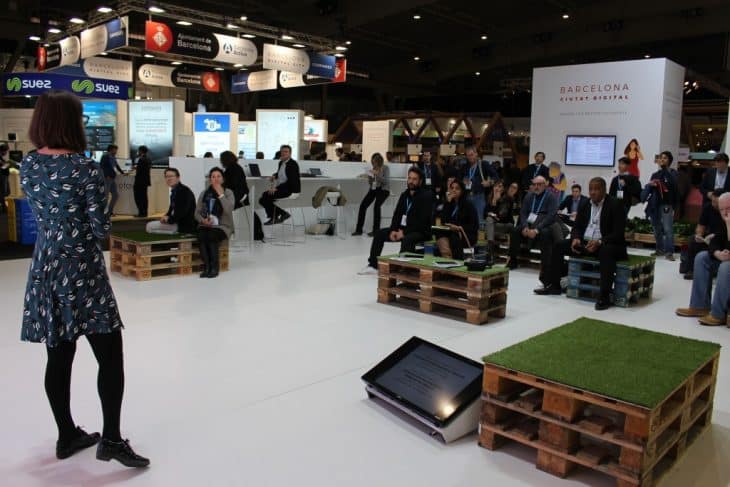The Smart City Expo World Congress, the international summit of discussion about the link between urban reality and technological revolution, reached this year its 6th edition.
Since its launching in 2011, it has succeeded to become a referential global event to support the development of our cities, a leading platform of ideas, networking, experiences and international business deals that gathers together stakeholders, in the context of urban development.
IAAC Fab City Research Lab and IAAC Advanced Architecture Group took part to the international gathering, presenting the Fab City Global Initiative and two projects using Virtual and Augmented Reality as a tool to further citizen participation practices in Urban Development.
IAAC Fab City Research Lab Director Tomas Diez took part to the SCEWC panel about Collaborative Platforms for Digital and Social Innovation and Sustainability presenting the Fab City Global Initiative and discussing the raise of the empowered citizen, from centralized to distributed solutions.
The Fab City Global Initiative is a global project to develop locally productive and globally connected self-sufficient cities. It comprises an international think tank of civic leaders, makers, urbanists and innovators working on changing the paradigm of the current industrial economy where the city operates on a linear model of importing products and producing waste.
Fab City is also a new urban model of transforming and shaping cities that shifts how they source and use materials from ‘Products In Trash Out’ (PITO) to ‘Data In Data Out’ (DIDO). This means that more production occurs inside the city, along with recycling materials and meeting local needs through local inventiveness. A city’s imports and exports would mostly be found in the form of data (information, knowledge, design, code).
How can cities and public institutions best support and work with innovation to collaborate with citizens to deliver truly smart public services?
Innovations in areas such as open data, open hardware and crowdsourcing provide new ways of using technology to involve people, their knowledge and their assets in solving social challenges. But these innovations are often disconnected from the public services where they can have the most impact.
On the same day of the congress, IAAC Academic Coordinator Mathilde Marengo and IAAC InnoChain PhD Candidate Angelos Chronis gave a talk and a demo about Implementing Participatory Design through Virtual and Augmented Reality in the framework of the activities promoted by the Ajuntament de Barcelona.
The one developed by the MaCT students for the Mumbai Worli BDD Chawl is an Augmented Reality Platform giving the locals to experience their desires in a spatial key and gain feedback on the design. Here technology becomes the platform for a real-time, bottom-up process of feedback, allowing to shape the space according to the users desires.
Poblejoc, the interactive installation developed in the framework of the EU funded project Active Public Space (APS), uses virtual reality to rise citizens awareness on understanding the consequences of their decision on their space. The Poblejoc public space elements are transformed into active info-points, giving back users information about their city.




